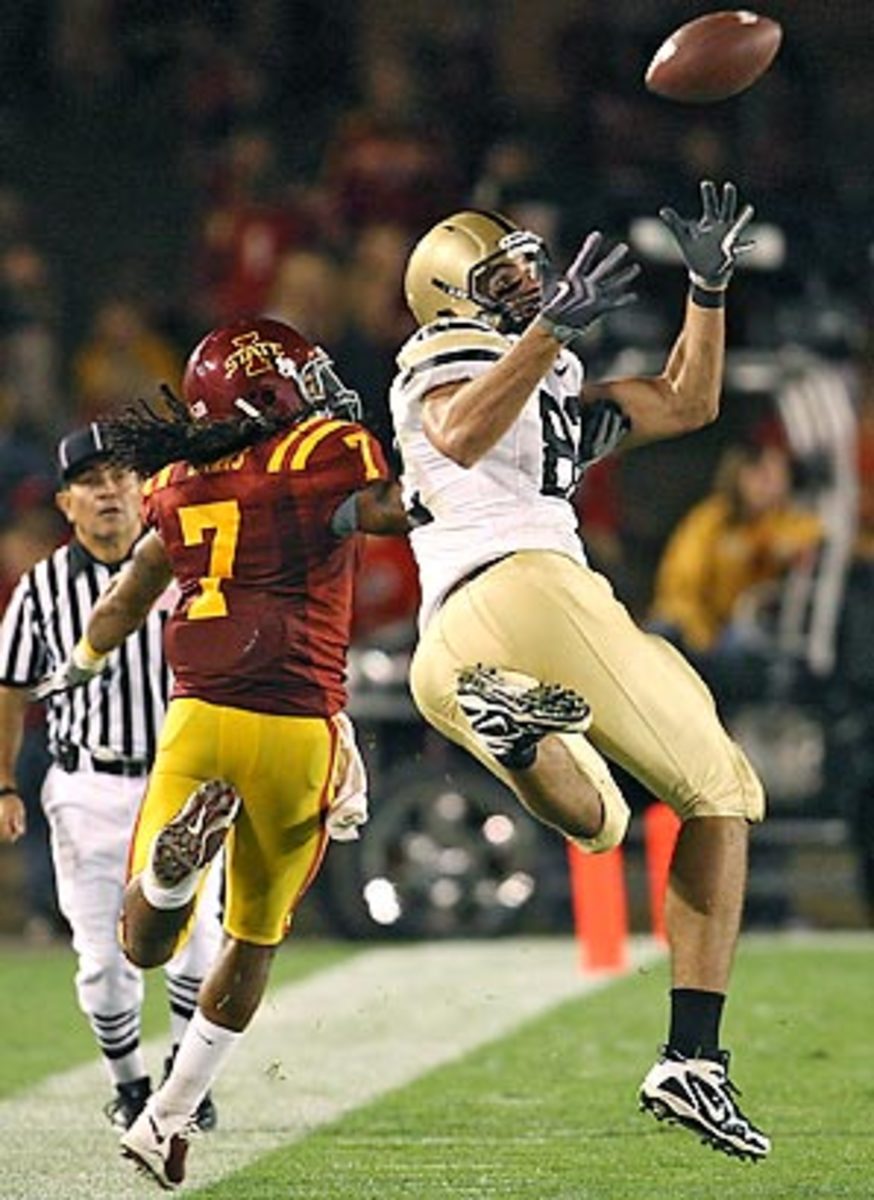In biggest game of season, Army will look to its biggest weapon
Ali Villanueva tends to stick out. At 6-foot-10, Army's wide receiver is a giant lining up across from sub-6-foot cornerbacks. He's also something of a lightning rod for trash-talking defensive backs.
"I always thought it was just rumors, but they literally just talk all day, all game long," Villanueva said.
They talk, all right -- and Villanueva has heard it all.
Get out of here, go play basketball.
What you doing out here?
Go back to the O-line.
But the tallest wide receiver in college football just keeps smiling. Eventually, the 286-pound senior knows he'll silence the chatter, knows he'll get a chance to posterize a defensive back. "I know I'm not going to be the best wide receiver they've ever faced, but I'm sure going to be the biggest one they've ever seen," he said.
The converted offensive lineman and Army are playing for their bowl lives on Saturday in the annual clash with Navy. With a win, the 5-6 Black Knights will bump UCLA out of the EagleBank Bowl and face Temple. But to stamp Army's first bowl ticket in 13 years, the Knights must beat the Midshipmen at their own game. Like Navy, Army runs the triple-option -- only, its version features a nearly impossible to prepare for twist: Villanueva.
When first-year coach Rich Ellerson -- a disciple of Georgia Tech coach Paul Johnson, who taught Ellerson the triple-option while the two worked at Hawaii -- came over from Cal Poly, he looked to add the same red zone threat that he had in the 6-6 Ramses Barden, who now plays for the New York Giants. Villanueva seemed a natural fit. The former high school basketball player possessed athleticism and size. Only, he'd never played wide receiver.
But Villanueva has been no stranger to change. He was recruited as a tight end out of SHAPE American High School in Belgium, but he never played the position at West Point and was quickly converted to defensive end. As a sophomore he shifted to offensive tackle, where he started 12 games last season before Ellerson switched him to right guard. Two weeks into spring practice, Ellerson approached Villanueva about changing positions for the fifth time in his career.
"As a captain, I didn't want to be a receiver-in-learning because the season picks up so fast and there's no time to learn," Villanueva said. "I was really skeptical in the beginning."
Skeptical, and admittedly out of his element. Villanueva wasn't instructed to cut the weight he'd carried as a lineman, but he did have to shed every instinct he'd relied on previously. Instead of blocking oncoming opponents, he had to initiate contact in pass and run support. "Sometimes going 40 yards to block a corner is the hardest thing I have to do all game," he said.
He had to learn to rely on his routes, and to trust that, if he ran them properly, the ball would be there. But the hardest thing was learning how to play the ball in the air on the fades and jump balls he typically sees in the red zone.
"Sometimes when I see the ball it's like a deer in headlights and I just stop," Villanueva said. "It's really hard for me to just come off the ball really fast and keep running ... I slowly started learning that I need to keep running and the ball is going to come to me."
In this offense, though, the opportunities don't come often. The Black Knights have rushed 553 times through 11 games, sixth-most in the nation, and they rank last in passing offense. (They've attempted just 140 passes, second-fewest to Navy's 89.)
Still, Villanueva has taken advantage of the inherent matchup problems the triple-option creates, leading the team with 29 receptions and 460 yards and accounting for all five of its receiving touchdowns (four of which have come in the red zone). The first of those scores came against Duke, whose coach David Cutcliffe called Villanueva's move "the most unbelievable transition in all of college football."
As surprising as the move and its success have been, Villanueva hasn't gotten caught up in it. He has, however, wondered what could have been had he not spent all that time on the offensive line.
"It's one of those things that I wonder," he said. "Like, 'What if I played wide receiver since I was five? How many touchdowns would I have this year, or how many yards would I have this year?'"
Against Navy, wondering won't matter. With its season on the line, Army's biggest offensive threat will face his biggest challenge since splitting out wide. The Midshipmen have given up just four receiving touchdowns all season, and boast two 6-2 corners on their two-deep.






